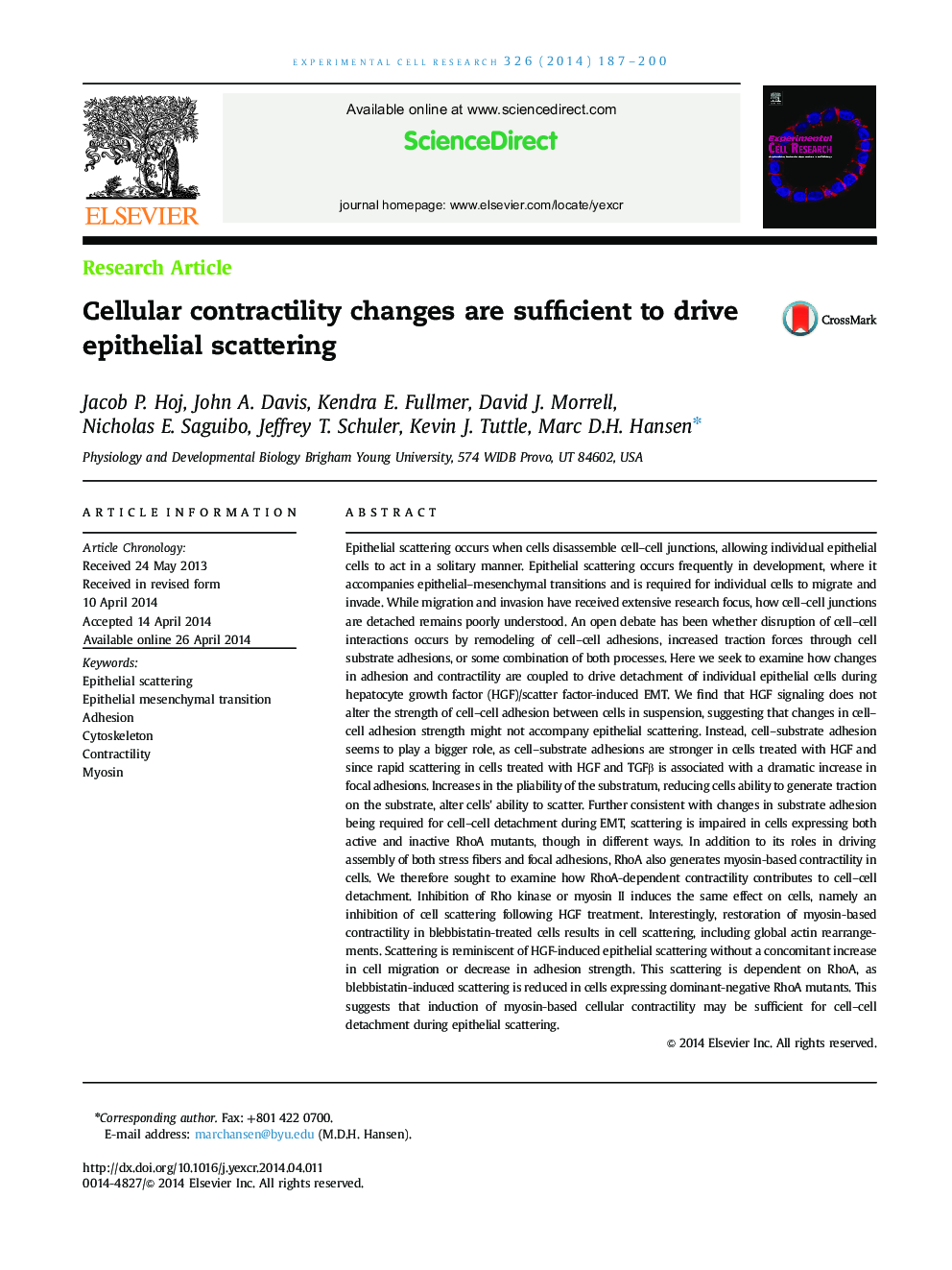| کد مقاله | کد نشریه | سال انتشار | مقاله انگلیسی | نسخه تمام متن |
|---|---|---|---|---|
| 2130223 | 1086545 | 2014 | 14 صفحه PDF | دانلود رایگان |
• HGF induced epithelial scattering is accompanied by changes in cell–substrate adhesion.
• Substrate properties that limit transmission of contractile forces to the substrate prevent epithelial scattering.
• RhoA, Rho kinase, and myosin II activity are required for scattering.
• Inhibition and restoration of myosin II activity is sufficient to induce epithelial scattering.
Epithelial scattering occurs when cells disassemble cell–cell junctions, allowing individual epithelial cells to act in a solitary manner. Epithelial scattering occurs frequently in development, where it accompanies epithelial–mesenchymal transitions and is required for individual cells to migrate and invade. While migration and invasion have received extensive research focus, how cell–cell junctions are detached remains poorly understood. An open debate has been whether disruption of cell–cell interactions occurs by remodeling of cell–cell adhesions, increased traction forces through cell substrate adhesions, or some combination of both processes. Here we seek to examine how changes in adhesion and contractility are coupled to drive detachment of individual epithelial cells during hepatocyte growth factor (HGF)/scatter factor-induced EMT. We find that HGF signaling does not alter the strength of cell–cell adhesion between cells in suspension, suggesting that changes in cell–cell adhesion strength might not accompany epithelial scattering. Instead, cell–substrate adhesion seems to play a bigger role, as cell–substrate adhesions are stronger in cells treated with HGF and since rapid scattering in cells treated with HGF and TGFβ is associated with a dramatic increase in focal adhesions. Increases in the pliability of the substratum, reducing cells ability to generate traction on the substrate, alter cells׳ ability to scatter. Further consistent with changes in substrate adhesion being required for cell–cell detachment during EMT, scattering is impaired in cells expressing both active and inactive RhoA mutants, though in different ways. In addition to its roles in driving assembly of both stress fibers and focal adhesions, RhoA also generates myosin-based contractility in cells. We therefore sought to examine how RhoA-dependent contractility contributes to cell–cell detachment. Inhibition of Rho kinase or myosin II induces the same effect on cells, namely an inhibition of cell scattering following HGF treatment. Interestingly, restoration of myosin-based contractility in blebbistatin-treated cells results in cell scattering, including global actin rearrangements. Scattering is reminiscent of HGF-induced epithelial scattering without a concomitant increase in cell migration or decrease in adhesion strength. This scattering is dependent on RhoA, as blebbistatin-induced scattering is reduced in cells expressing dominant-negative RhoA mutants. This suggests that induction of myosin-based cellular contractility may be sufficient for cell–cell detachment during epithelial scattering.
Journal: Experimental Cell Research - Volume 326, Issue 2, 15 August 2014, Pages 187–200
